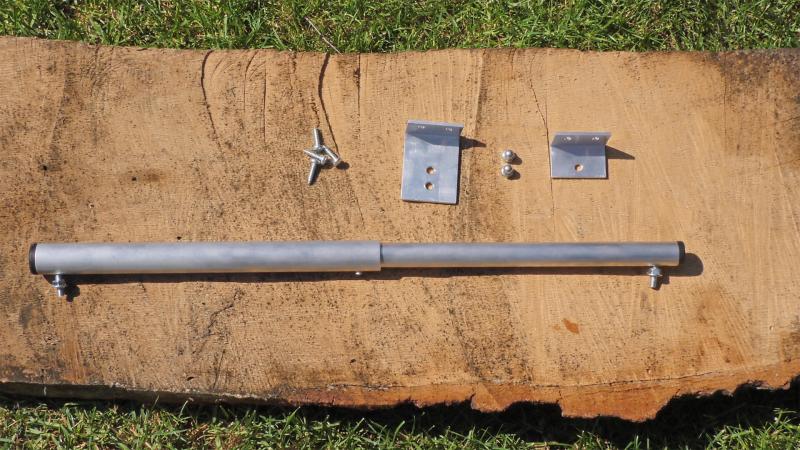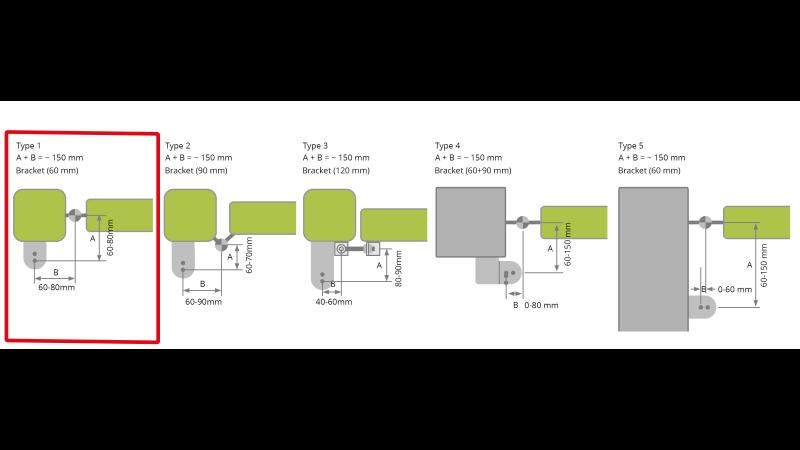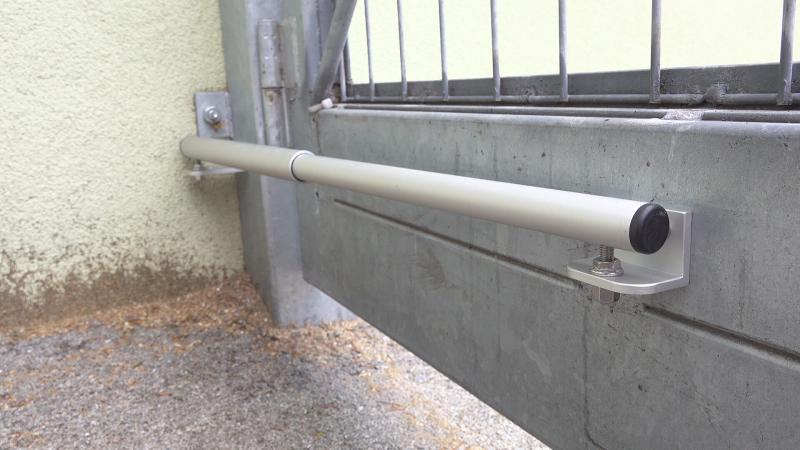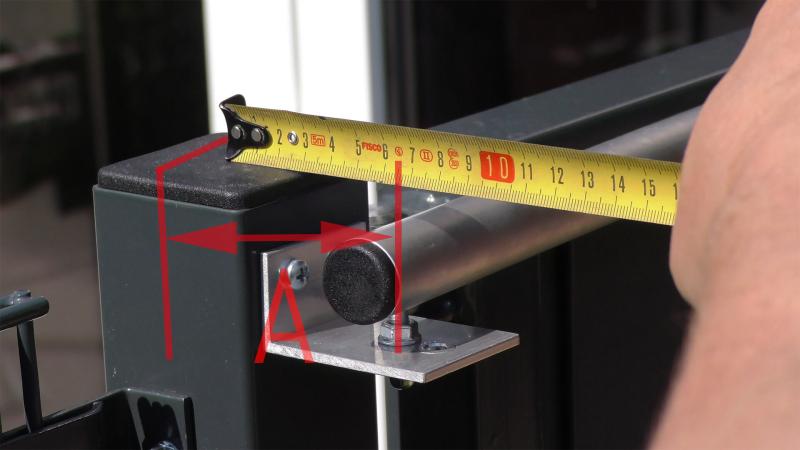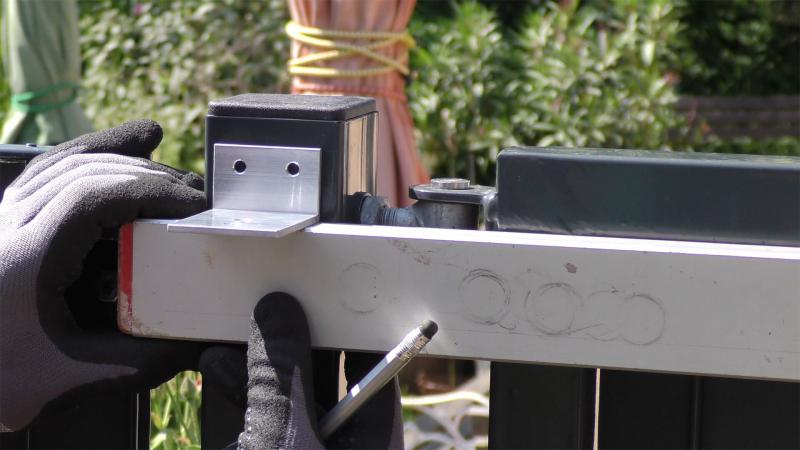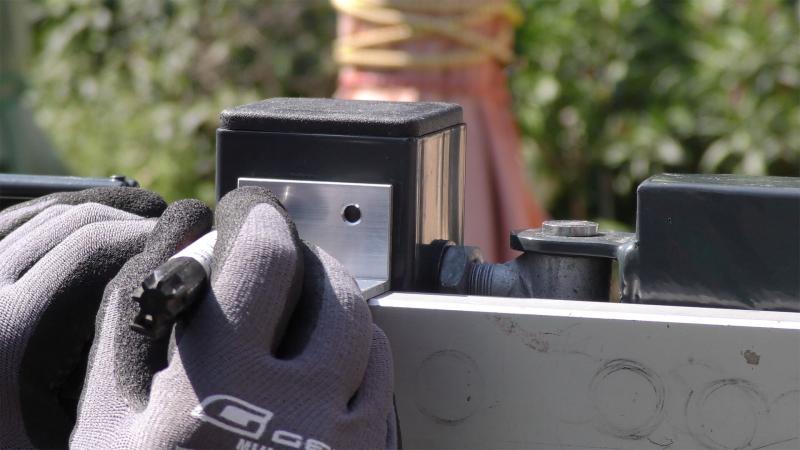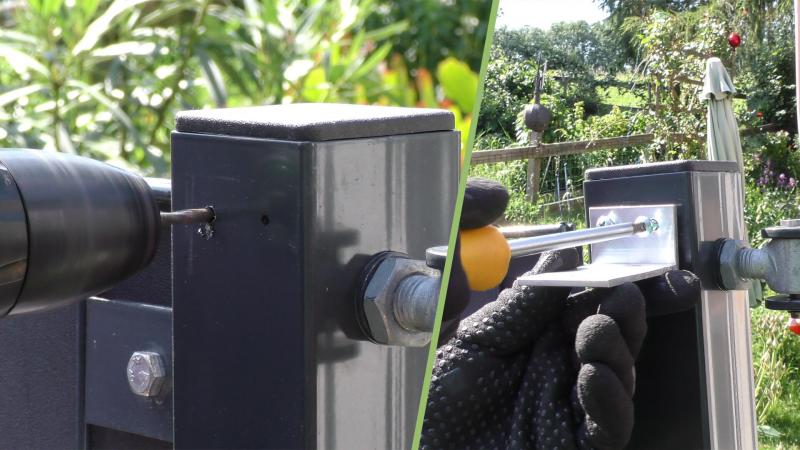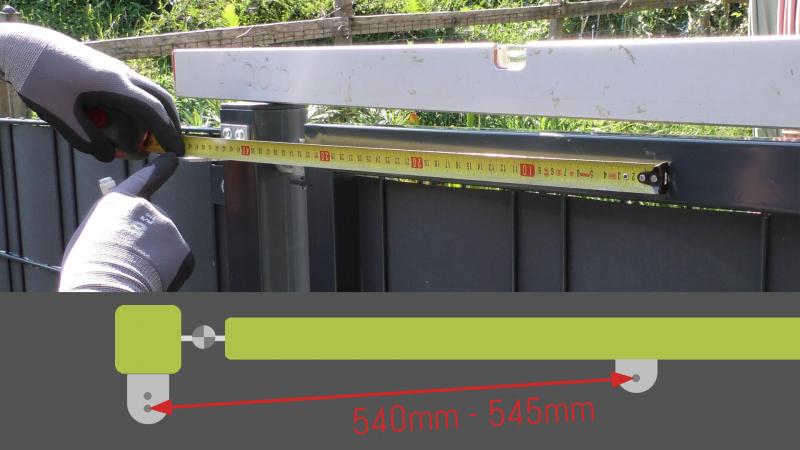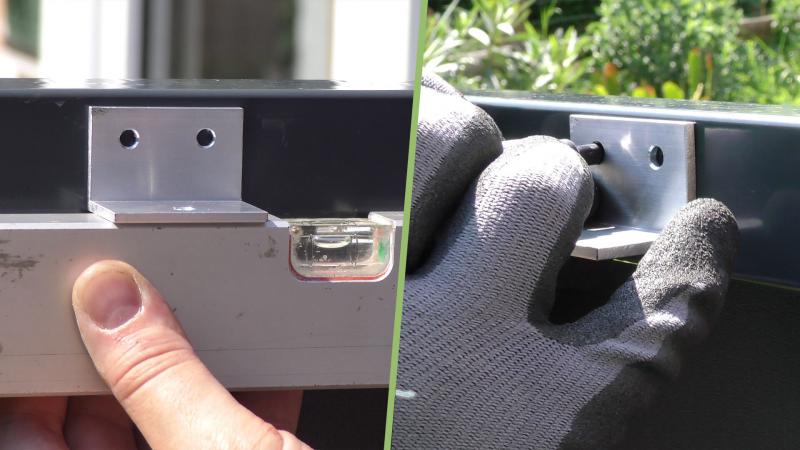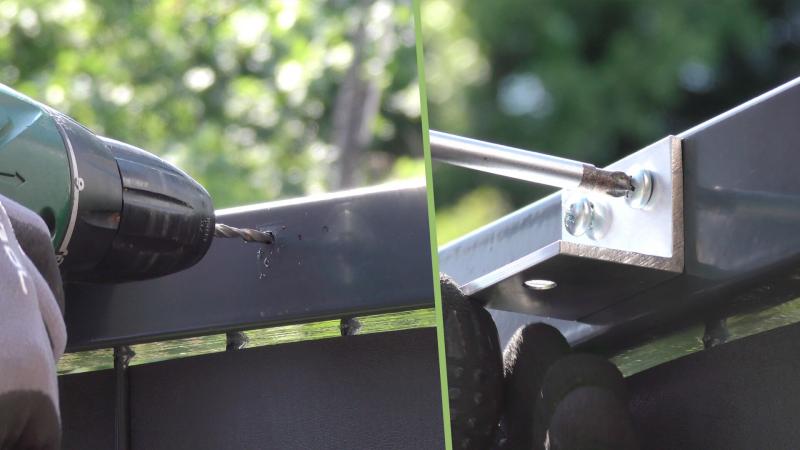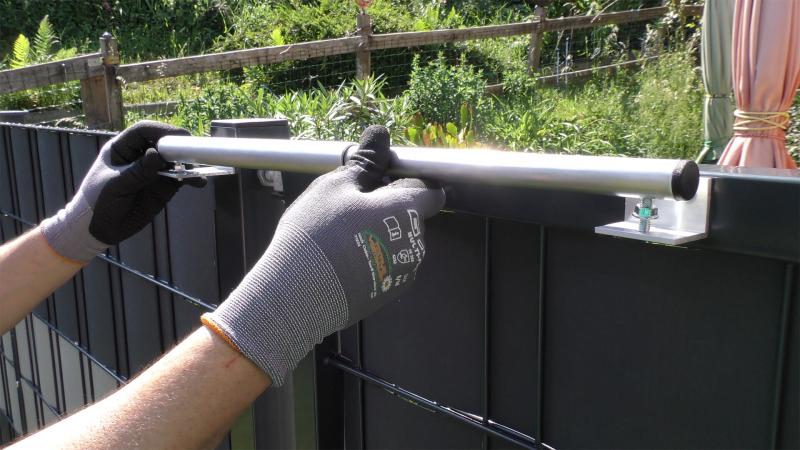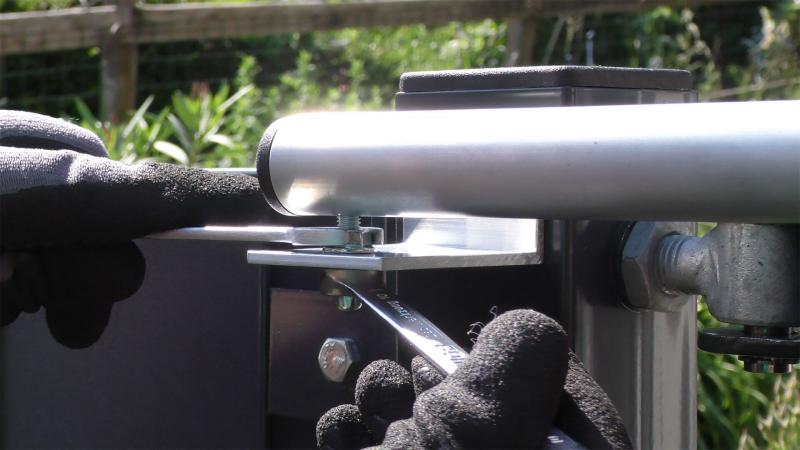Mounting example type 1 - Mounting on gateposts with centrally located door hinges

I. Check material and tool list
Included in delivery are the garden gate closer, two aluminium brackets with different side lengths, 4 tapping screws and 2 cap nuts.
WARNING: The garden gate closer is preloaded! The preloading safety should not be removed before installation! Due to preloading, the threaded rods of the gate closer are skewed. They will adjust during assembly.
- 1 garden gate closer
- 1 aluminium bracket (bracket 1): 60, 90 or 120 mm
- 1 aluminium bracket (bracket 2): 30 mm
- 2 cap nuts M6
- 4 tapping screws 4,8 x 19 mm
You will need a cordless screwdriver with a 4.2 mm metal drill and a cross slot (Phillips) screwdriver (PH2). Furthermore, you need a spirit level, measuring tape, pen and two no.10 fork wrenches.
II. Determine type of mounting
The following mounting example shows the mounting type 1, that is the mounting at gates with posts and centrally located door hinges. In this variant, usually the 60 mm bracket (bracket 1) is sufficient. For different situations, you may eventually need a longer bracket. All available mounting brackets can be found in the category Accessories.
III. 5 steps for successful mounting
- Determine mounting position of gate closer
- Measure bracket 1 (post-sided)
- Mount bracket 1 (post-sided)
- Position and mount bracket 2 on the gate
- Insert and tighten garden gate closer
Step1: Determine mounting position of gate closer
First, you need to determine the position of the gate closer. It can be positioned at the top of the gate, in the middle or at the bottom. It is important that it is mounted levelled! As well, the two brackets (bracket 1 and bracket 2) need to find sufficient hold on the gatepost and on the gate respectively. The larger bracket (bracket 1) is to be mounted on the post. The smaller bracket (bracket 2) is to be mounted on the gate.
Step 2: Measure bracket 1 post-sided
After having positioned the gate closer correctly, check the distance of the gate's pivot point (located in the middle of the hinges) and the pivot point of the closer (chosen mounting hole of bracket 1). For measuring use the larger bracket (bracket 1).
The sum of the two lengths A and B should not exceed 150 mm, and also should not be less than 140 mm either. However, if the sum of the distances is bigger than 150 mm, the gate can only be opened a little less than 90° at worst.
The pictures below show an example in which the distance A is about 75 mm. That means the distance from the centre of the hinges to, in this example, the second of the outter mounting hole of the larger bracket 1. Now move bracket 1 laterally alongside the post until distance B is 75 mm. Just as done when measuring distance A, distance B is also defined by measuring from the centre of the hinges to the position of the mounting hole on the bracket.
Note: As long as the distances are correct the gate closer can be mounted in any of the two mounting holes. When using a larger bracket (90 or 120 mm), it is of advantage to choose one of the middle holes so that the gate closer can be fine-tuned afterwards.
Step 3: Mount bracket 1
After having measured the correct position of bracket 1 on the gatepost, mark the drilling holes with a pen. We recommend to centre-punch the drilling holes in order to prevent the metal drill from slipping off.
Drill the holes using a cordless screwdriver with a 4.2 mm drill. The drill’s dimensions are essential here because if using a smaller diameter, the screw can tear off. Using a bigger diameter, the screw doesn´t find enough hold. After drilling, mount the bracket and tighten it using the tapping screws.
Step 4: Position and mount bracket 2 on the gate
Having positioned and fixed the first bracket (bracket 1) correctly, you´ve already done the biggest part of the mounting!
Now, the second bracket (bracket 2) has to be positioned correctly on the gate. Therefore, the distance between the two mounting holes (that is the chosen mounting hole on bracket 1 and the mounting hole on bracket 2) must be between 540 mm and 545 mm. Exact measurement is essential here!
But be careful: If this distance is too small, the gate will only open a little less than 90°. If it is too big, the gate won´t close entirely.
Now check the vertical position of the brackets using the spirit level!
Attention: If you adjust the position of bracket 1 later, bracket 2 must be re-positioned as well to ensure the correct hole-to-hole distance.
Having measured the distance correctly, mark, centre-punch and then drill both holes for bracket 2 using a 4.2 mm drill. Mount and tighten bracket 2 using the tapping screws enclosed.
Step 5: Insert and tighten the garden gate closer
For easier mounting, the garden gate closer is pre-loaded when delivered. For inserting the gate closer, open the gate until the gate closer can be put into the respective holes without applying any force. The thicker end of the closer is to be put into bracket 1 (near the wall). The slimmer end is being inserted into bracket 2 (on the gate).
Finally, the garden gate closer is fixed using the cap nuts. Therefore, screw on and tighten the cap nuts using the locknuts. In this step the nuts should be tightened in such a fashion, so that the threaded rods are straightened and stand in right angles to the mounting bracket.
Note: In most cases, the pre-loading security bolt loosens by itself during this procedure. In case that the bolt remains, carefully move the gate just a few millimetres towards its opening direction!
You’ve done it. We hope you enjoy your new garden gate closer!
If you have any further questions about the assembly, do not hesitate to contact us via email office@gardengatecloser.com or via our WhatsApp service +43 664 881 89 781!
Your gardengatecloser.com team

